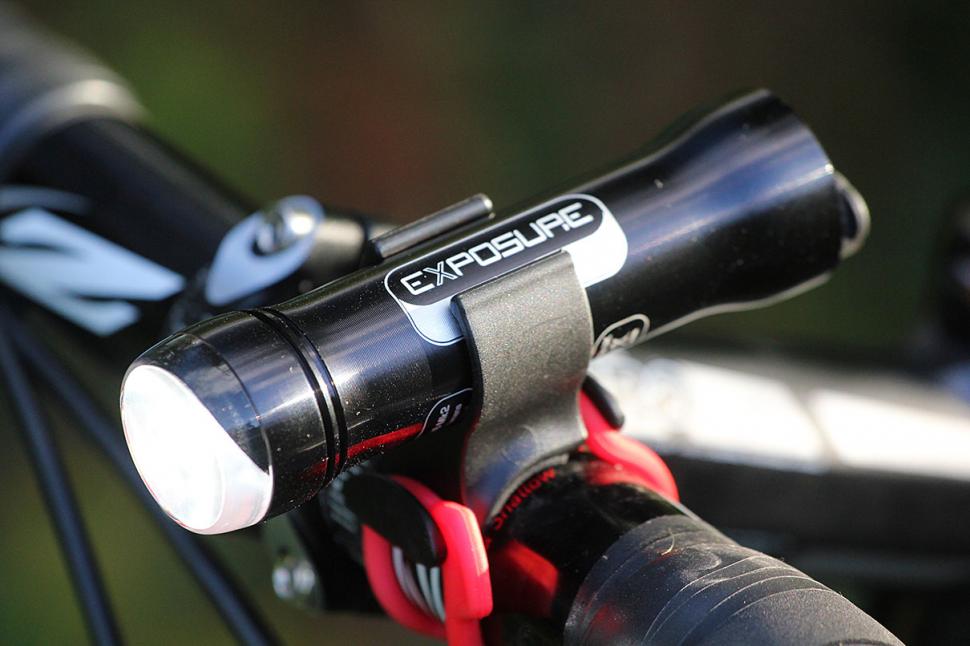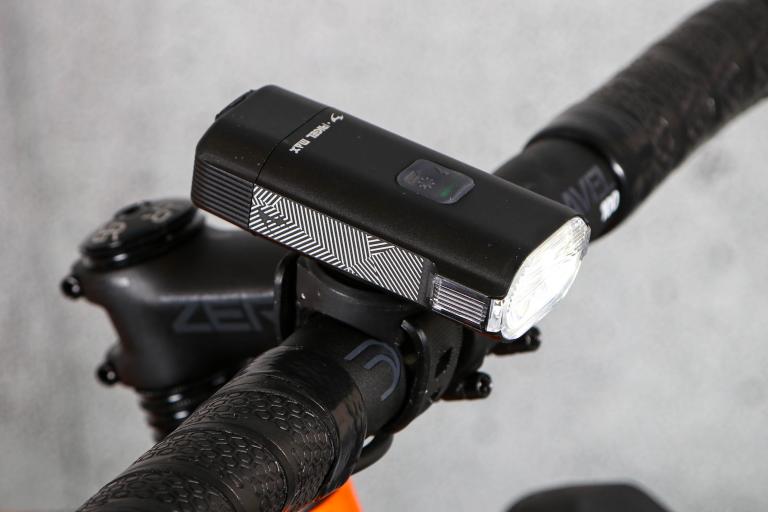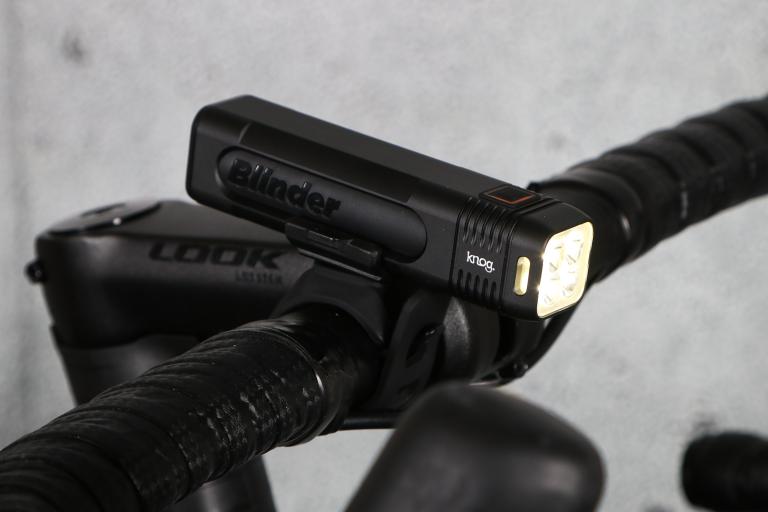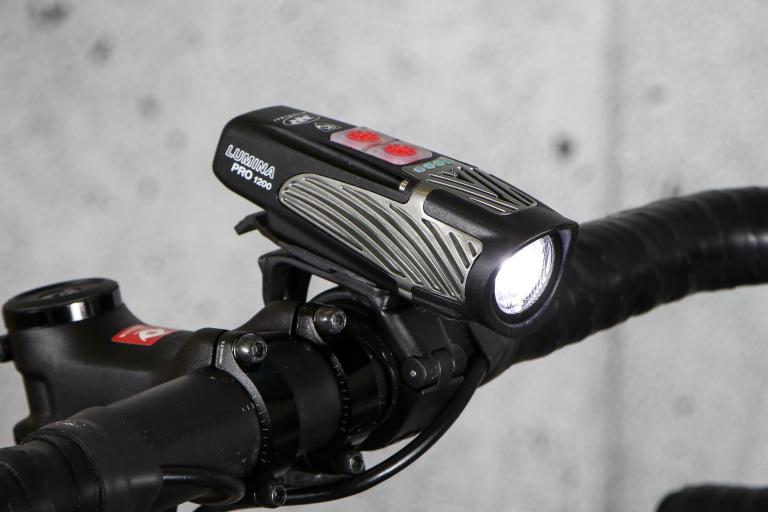- News
- Reviews
- Bikes
- Components
- Bar tape & grips
- Bottom brackets
- Brake & gear cables
- Brake & STI levers
- Brake pads & spares
- Brakes
- Cassettes & freewheels
- Chains
- Chainsets & chainrings
- Derailleurs - front
- Derailleurs - rear
- Forks
- Gear levers & shifters
- Groupsets
- Handlebars & extensions
- Headsets
- Hubs
- Inner tubes
- Pedals
- Quick releases & skewers
- Saddles
- Seatposts
- Stems
- Wheels
- Tyres
- Tubeless valves
- Accessories
- Accessories - misc
- Computer mounts
- Bags
- Bar ends
- Bike bags & cases
- Bottle cages
- Bottles
- Cameras
- Car racks
- Child seats
- Computers
- Glasses
- GPS units
- Helmets
- Lights - front
- Lights - rear
- Lights - sets
- Locks
- Mirrors
- Mudguards
- Racks
- Pumps & CO2 inflators
- Puncture kits
- Reflectives
- Smart watches
- Stands and racks
- Trailers
- Clothing
- Health, fitness and nutrition
- Tools and workshop
- Miscellaneous
- Buyers Guides
- Features
- Forum
- Recommends
- Podcast
review
 Exposure Sirius Mk2
Exposure Sirius Mk2£109.95
VERDICT:
Neat commuter light with a beam that'll show the way even on unlit roads
Weight:
90g
Contact:
www.exposurelights.com
At road.cc every product is thoroughly tested for as long as it takes to get a proper insight into how well it works. Our reviewers are experienced cyclists that we trust to be objective. While we strive to ensure that opinions expressed are backed up by facts, reviews are by their nature an informed opinion, not a definitive verdict. We don't intentionally try to break anything (except locks) but we do try to look for weak points in any design. The overall score is not just an average of the other scores: it reflects both a product's function and value – with value determined by how a product compares with items of similar spec, quality, and price.
What the road.cc scores meanGood scores are more common than bad, because fortunately good products are more common than bad.
- Exceptional
- Excellent
- Very Good
- Good
- Quite good
- Average
- Not so good
- Poor
- Bad
- Appalling
The Exposure Sirius Mk2 is a cool little commuting option that's easy to fit and use, and bright enough to show the way even on unlit sections of road.
The Sirius is just 106mm long with a 28mm diameter (even less in the central section), and it weighs 90g. It really is titchy tiny. It sits in a simple plastic bracket that attaches securely enough to your handlebar via a stretchy rubber ring. The light comes from a single Cree XPG white LED driven by a rechargeable 2600 mAh lithium ion battery.
You turn the light on by pressing the single button on the back twice, then you cycle through the three different beams. The high beam has a runtime of about two hours, the medium beam four hours, and the low beam six hours.
I left it on high beam most of the time and that gives you enough light to see the way on unlit sections of road. I just did an hour's ride with it around the lanes and felt perfectly safe and confident, although if most of your riding is on unlit roads, you'd probably want something with a bit more power (such as Exposure's Strada that we've also tested).
The one negative I would point out here is that although the centre of the beam is intense, you don't get much peripheral vision so at times it felt a bit like riding down a tunnel. That might be important to you or it might not.
At dawn/dusk and on well-lit streets you can switch to a less powerful beam to preserve the battery. I'd say this light is best suited to rides where the majority of the time you're on lit roads, but with the bonus that it'll see you right on unlit sections too.
Oh, there's one other beam option too: pulsing. The idea is that you use this one in the daytime. Use it at night and it'll drive you nuts.
I did find that switching between beams out on the road could swivel the light forward on the bars which was a bit disconcerting... That's until I developed the 'hypodermic syringe' technique of gripping the clamp between my first two fingers and pressing the button with my thumb. That works pretty well. Even if you do push the light out of position, it's easy enough to drag it back in place while you're still on the move.
Unlike many lights out there, the Sirius's lens extends forwards from the light body to offer side visibility – you can be seen from the side as you pass through junctions, for example, rather than just from the front. It's a legal requirement to have a light with this type of illumination on your bike if you're riding on the road at night. The glow from this doesn't distract you because Exposure have thoughtfully added a 'glare guard' – a blacked out hood that stops it shining upwards. Well, you can see the glow a bit but it's a small price to pay for not being sideswiped.
The function button doubles up as a basic colour-coded battery level indicator, and when it's time to recharge you can do that via USB. The charge port comes with a silicone cover to stop any water or dirt getting inside as you ride.
I guess you could break the resin lens if you were really unfortunate/careless but you're never going to damage the machined aluminium body enough for it to make any difference. Plus, the British-made Sirius comes with a two-year warranty.
Verdict
Neat commuter light with a beam that'll show the way even on unlit roads.
The light comparator
If you have a nice big screen you can click here for the widescreen version (1400x1000px)
road.cc test report
Make and model: Exposure Lights Sirius Mk2 - Front Light
Size tested: Black
Tell us what the light is for, and who it's aimed at. What do the manufacturers say about it? How does that compare to your own feelings about it?
It's a light designed especially for road use and, in particular, commuting.
Exposure say: Sirius is a light perfect for commuters. With a new lens giving exceptional side visibility while caring for the rider with a glare guard, the Sirius's 360 lumens is more than enough light to navigate the darkest streets and has a pulsing mode for maximum visibility during the day.
Exposure Lights have always been designed to get the maximum light from minimum sized unit and Cable Free Design ensures this is maintained. Utilising superb brackets Exposure Lights attach quickly, safely and securely for hassle free riding.
Intelligent Thermal Management is patented technology which constantly monitors the LED's temperature to ensure that they do not overheat and become inefficient. ITM keeps the LEDs operating at the optimum output, saving battery power and maximising burntime.
The function button doubles as the classic Exposure Lights fuel gauge, displaying the remaining battery life using a traffic light system to make it clear when it's time to recharge.
For the complete commuter kit the Sirius can be bought with the Flare rear light in the Sirius Flare pack.
Tell us some more about the technical aspects of the light?
Here are the tech details as given by Exposure:
Weight: 84g
Output: 360 lumens white light
Power: 2600mAh
Burn time: 2h High, 4h Medium, 6h Low
Emitter: 1 x Cree XPG white LED.
Cable Free Design (CFD): A primary feature unique to Exposure Lights removes the hassle of cables and straps.
Function button: 3 colour Mode and Fuel Gauge indicator.
Charger: USB charger
Intelligent Thermal Management (ITM): Patented technology that combats the loss in efficiency of LEDs at elevated temperatures, maintaining optimum output keeping you shining 'Brighter for Longer'.
Smart Port Technology Plus (SPT+): Patented technology that enables a wide range of accessories to be used; Additional rear lights, back-up power supplies, remote switches and even charging other USB devices direct from your light.
Collimated Lens Technology: Exposure Lights use these high-tech resin lenses which have been extensively researched. These lenses are specifically designed to maximise light collection from the LEDs and efficiently produce an optimum beam pattern for cycling ensuring no light is wasted.
Weatherproof Body: CNC machined aerospace grade aluminium body with efficient heat transfer design. Fully manufactured in the UK.
Gold plated charge port: The charge port is gold plated for corrosion resistance, more efficient conductivity and it is sealed to a greater level adding protection to you light.
Storm Cap: The Smart Port in protected by a silicone cover to stop muddy gloves pushing dirt into the port.
Rate the light for quality of construction:
9/10
It's a tough little unit, and it's weatherproof. Even if you do damage things like the charge port's storm cap or the bracket, you can get replacements very easily.
Rate the light for design and ease of use. How simple was the light to use?
9/10
It could hardly be easier to use.
Rate the light for the design and usability of the clamping system/s
7/10
It's a simple bracket that's kept in place by a glorified O-ring. The one shortcoming is that you can move the light quite easily when switching between beams while on the move.
Rate the light for waterproofing. How did it stand up to the elements?
9/10
Rate the light for battery life. How long did it last? How long did it take to recharge?
8/10
Rate the light for performance:
8/10
Rate the light for durability:
9/10
Rate the light for weight, if applicable:
9/10
Rate the light for value:
7/10
Tell us how the light performed overall when used for its designed purpose
Good output, simple to use.
Tell us what you particularly liked about the light
The build quality, tough design, decent runtimes, side visibility.
Tell us what you particularly disliked about the light
Quite easy to swivel the light forward accidentally while switching beam modes.
Did you enjoy using the light? Yes.
Would you consider buying the light? Would certainly consider it.
Would you recommend the light to a friend? Yes.
About the tester
Age: 43 Height: 190cm Weight: 75kg
I usually ride: My best bike is:
I've been riding for: Over 20 years I ride: Most days I would class myself as: Expert
I regularly do the following types of riding: commuting, club rides, sportives, general fitness riding,
Mat has been in cycling media since 1996, on titles including BikeRadar, Total Bike, Total Mountain Bike, What Mountain Bike and Mountain Biking UK, and he has been editor of 220 Triathlon and Cycling Plus. Mat has been road.cc technical editor for over a decade, testing bikes, fettling the latest kit, and trying out the most up-to-the-minute clothing. He has won his category in Ironman UK 70.3 and finished on the podium in both marathons he has run. Mat is a Cambridge graduate who did a post-grad in magazine journalism, and he is a winner of the Cycling Media Award for Specialist Online Writer. Now over 50, he's riding road and gravel bikes most days for fun and fitness rather than training for competitions.
Latest Comments
- Born_peddling 4 hours 3 min ago
Muddyfox tour 100's I've wide & flat feet plus there's the optional choice of using cleats with them...
- Prosper0 3 hours 57 min ago
Just doing the Lord's work in case anyone's interested in this product. This Mucoff Pump is a £100 rebrand of an £85 Rockbros rebrand of a £60...
- mdavidford 4 hours 42 min ago
You forgot ignoring half the race to show awkward interviews with the riders' Proud Parents™ instead.
- mdavidford 4 hours 46 min ago
Obviously it means 'springing out of the bunch' on a critical sector. Or maybe it's referring to the time of year.
- David9694 5 hours 33 min ago
Car crashes through garden wall for second time in 18 months https://www.wiltshire999s.co.uk/car-crashes-garden-second-time/
- David9694 5 hours 35 min ago
Woman taken to hospital after flipping car onto roof in Trowbridge...
- A V Lowe 6 hours 17 min ago
Its blindingly obvious from the image that the DKE of the buses include the mirrors which extend to nearly reach the edge of the tarmac pavement on...
- Sredlums 6 hours 50 min ago
It's sad when being very good at your job - any job - isn't enough to earn a decent living. It shouldn't be that way....




Add new comment
14 comments
Good for the Netherlands. Not particularly relevant to me, as a UK rider.
I'd rather see the banning of flashing lights than some nebulous rules regarding what certain people feel to be bicycle-specific.
With respect Andy, unfortunately the lighting laws in other EU countries have become very relevant to you. This is so because although their are British standards for road legal bicycle lights they are rarely complied with. This is because of the, in my view, scandelous position, that any light in the UK that is supplied making fitting to a bicycle possible can be called a "cycle light" and if it doesn't dazzle other people can be used as a secondary light. Due to the brightness of many and their miscellaneous beam patterns, they could be held to do exactly this. This has the effect that in an accident you could be held at fault and any insurance you might think you have could be null. Whereas if you carry only lights conforming to British or other EU national standards, this cannot be claimed.
Additionally of course it nullifies any claims that motorists may make that bicycles do not comply with construction and use regulations. This in my view, will help to "normalise" cycling and heal rifts between those who see roads as for motorists (not forgetting that around 80% of us on here are motorists). This will encourage people to more easily take to bicycles, thus benefitting us all.
I think that those in the British cycle industry who wish to promote cycling, and therefore sales, in the long term would be wise to promote only road legal parts for road bikes and to say that this is so.
We've all become accustomed to the crap that passes for bicycle lights suitable for road use due to lack of much else on the market in the UK. The only way to get manufacturers to take notice is by pointing this out and reducing the review score for lights they market as suitable for road use, which plainly aren't.
Sounds as though some German bike magazine is what you want?
Not at all, I can't read German. Just that it would be refreshing to read a British magazine that actually reviews road legal "bicycle" lights. Rather than the, IMO gimmicky shiny bits that have nothing particularly to do with bicycles, such as the light reviewed here (be wonderful if the manufacturer would like to contradict me?).
As due to the non-application of British standards, they will perforce have to review lights that comply to the standards of other EU countries. This makes them road legal in the UK also.
The Netherlands also have a cohesive series of laws that such lights have to comply with for example.
The very real concern with the German standard for bicycle lights is that unlike the shambolic laws in the UK which even allow lights such as the above tested light to be called a "bicycle light" - which it is NOT. - It is not legal as a secondary light as it might dazzle other road users and is not legal as a primary light as it is not type approved - fair to assume as this would be an advertising point if it were so. The German laws provide a cohesive standard which is legal anywhere in the EU.
As such ~Road CC get your act together and give us proper revues of road legal lights, instead of "toadying" to the bicycle gimmick industry. Indicate what standard makes them "road legal"
Is it really true, as the article states, that front lights must, by law, show some light to the sides?
This is a new one on me, but then, there are lots of things new to me. I hate change, except pay rises, obviously.
Just because cars don't flash (other cyclists can't flash) doesn't mean they aren't affected by glare from a high power bicycle light. Most drivers will only flash if the glare is very bad to the point of making it nearly impossible to see.
Yes - when I have this light positioned directly at traffic on full beans, I'll almost always get flashed by cars at night on country lanes. But, when dipped to provide a better view of the road surface, never.
I use the helmet mount a lot to give me total control. Though I recently had a near miss when my head was slightly turned and a car turned to me without picking me out. I have since mounted a second sirius light to the bars on the dimmer but still bright setting. So I've sort of got 'seeing' and 'being seen'.
After a year and a half of fairly extensive use of the previous model, the battery life has halved.
When you are on the receiving end of a bright cycle light coming towards you you will soon understand why they should be banned. Pointing your light down only helps a little ... what you need is a proper beam cut-off as mandated by German regulations. Its about time more manufacturers spent some time and effort in designing lights fit for proper road use. This isn't as simple as it sounds, which is why most manufacturers tend to avoid investing the time and the effort to do so, as the cost will also go up.
Here in the States, at least, I generally take the viewpoint that a light is only bright enough when cars flash their high beams at me. It would be nice if Exposure made some sort of "shield" for their lights, so that you could reduce the amount of unwanted upwards light throw. I have a Reflex, which puts out a pretty fair amount of light. I'm mostly riding rural roads, though.
What is the fascination with this German standard on every light thread. A poorly positioned light is going to dazzle regardless. I use the Sirius mk1 year round on pulse and a Strada mk5 or Toro in the winter and never had an issue with oncoming traffic as they're positioned with some common sense.
Because they can make lights that throw loads of light on the road and little in the eyes of drivers. The MTB light makers dont bother, as its more expensive than picking a lens out of a Taiwanese catalogue.
I have a number of German lights and the Exposure MaxxD, Diablo and Joystick. Stick someone else on your bike and have them ride towards you and its 'blindingly' obvious the german ones are better. Point the Exposures at the ground and it improves things but you cant see very far ahead, certainly not as far as the lights designed for road use.
Since it is supposed to be a commuter light, does is still dazzle oncoming traffic? Does it meet any recognised standard for a road light such as the German one?